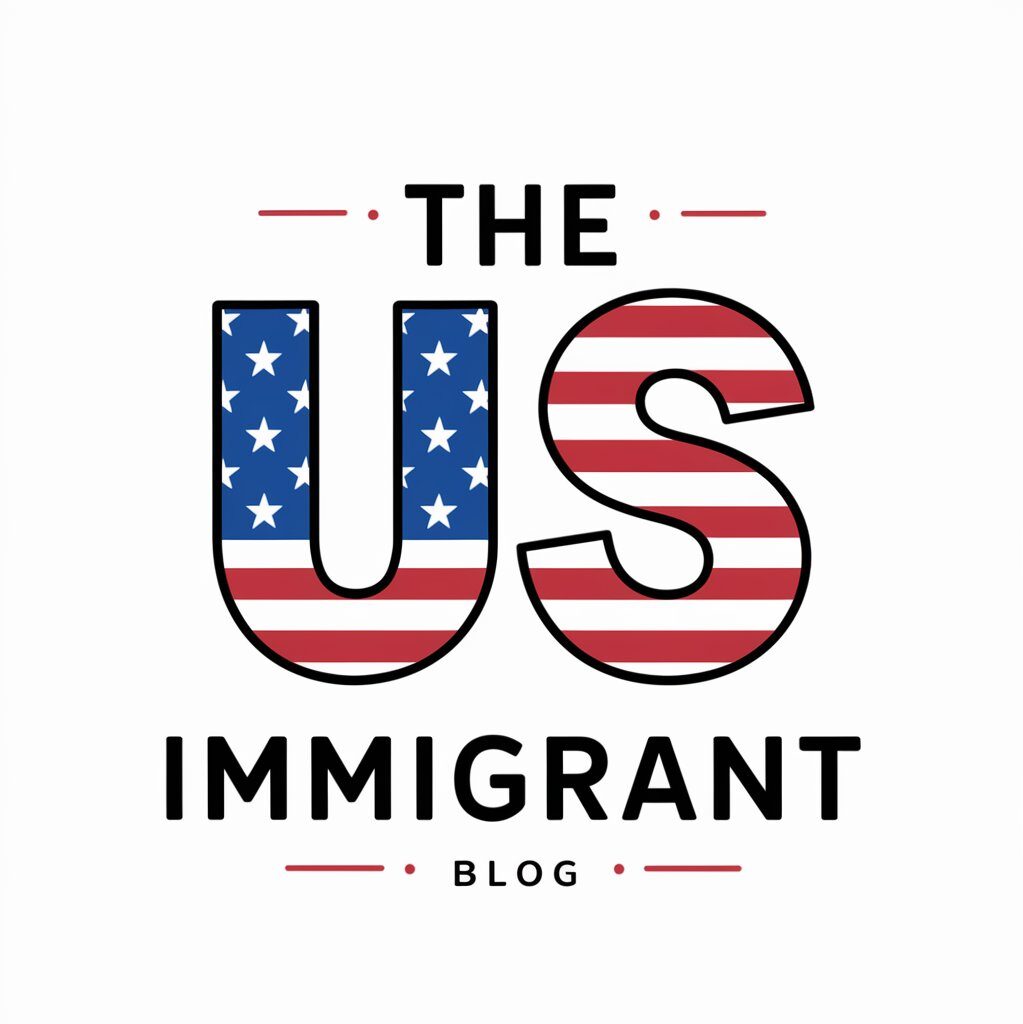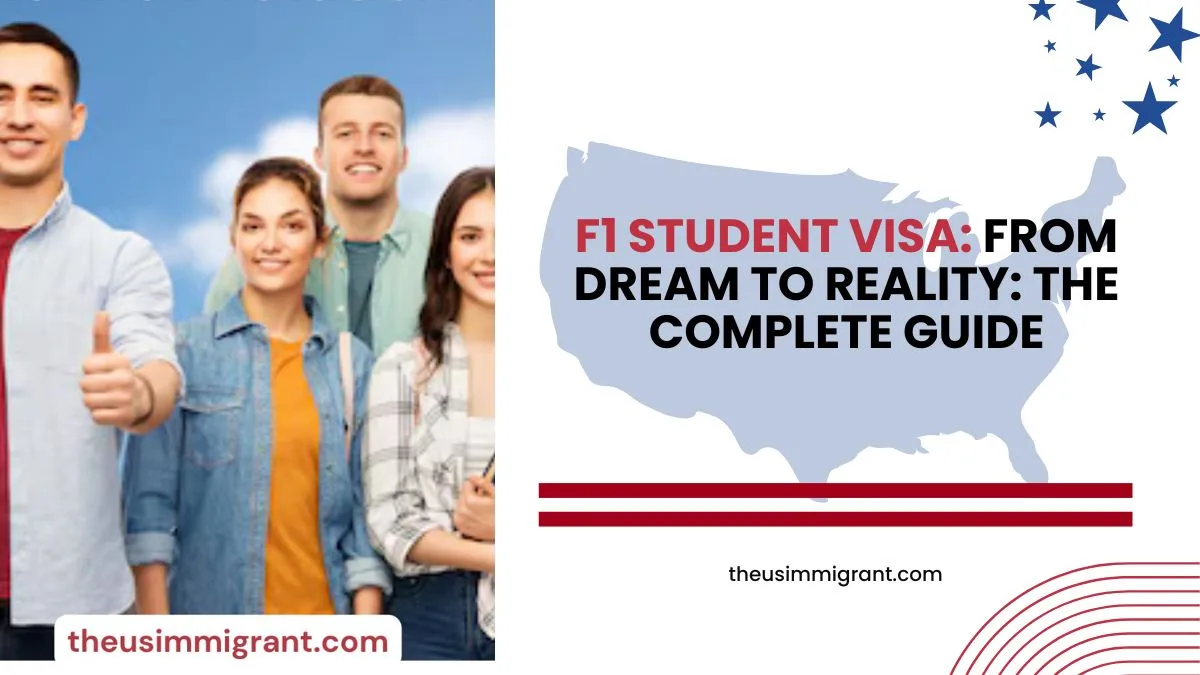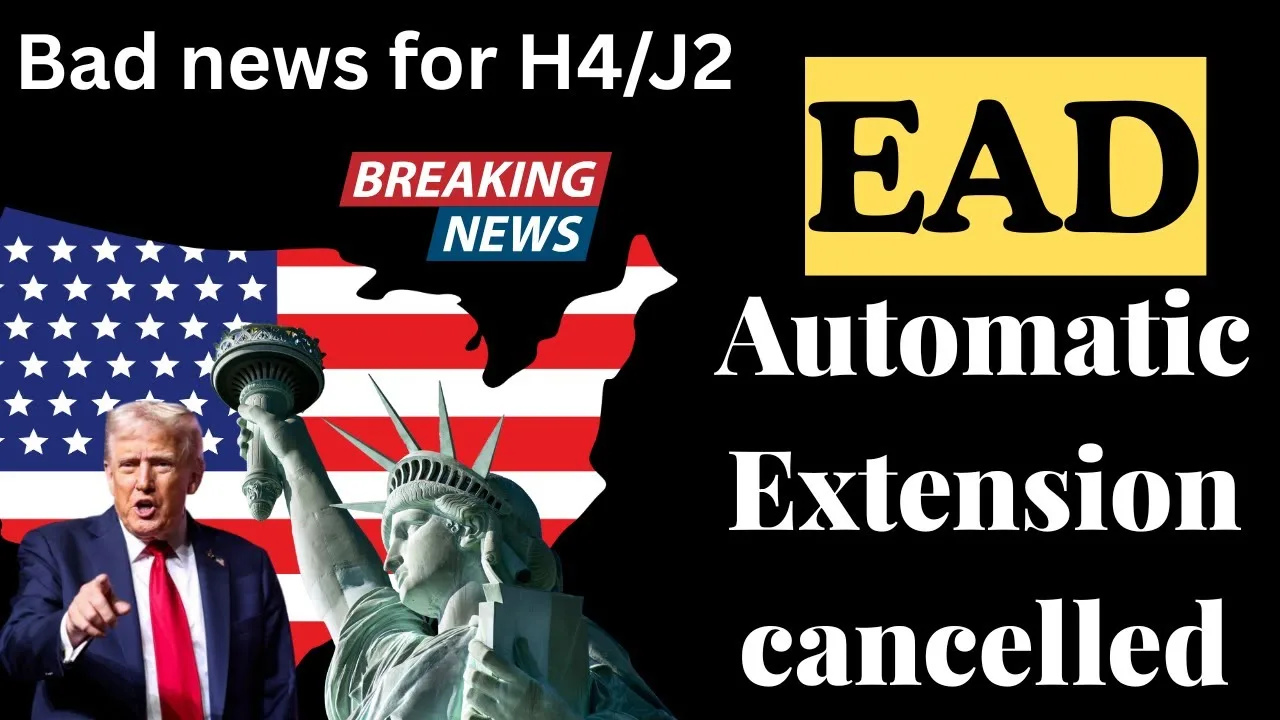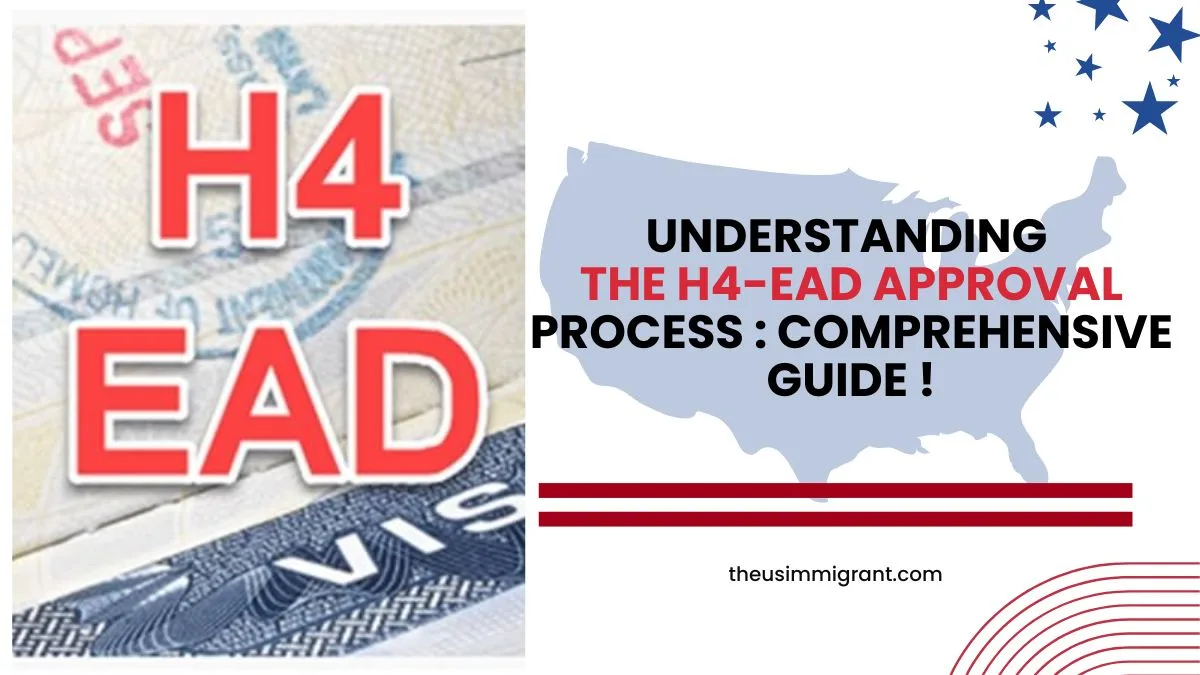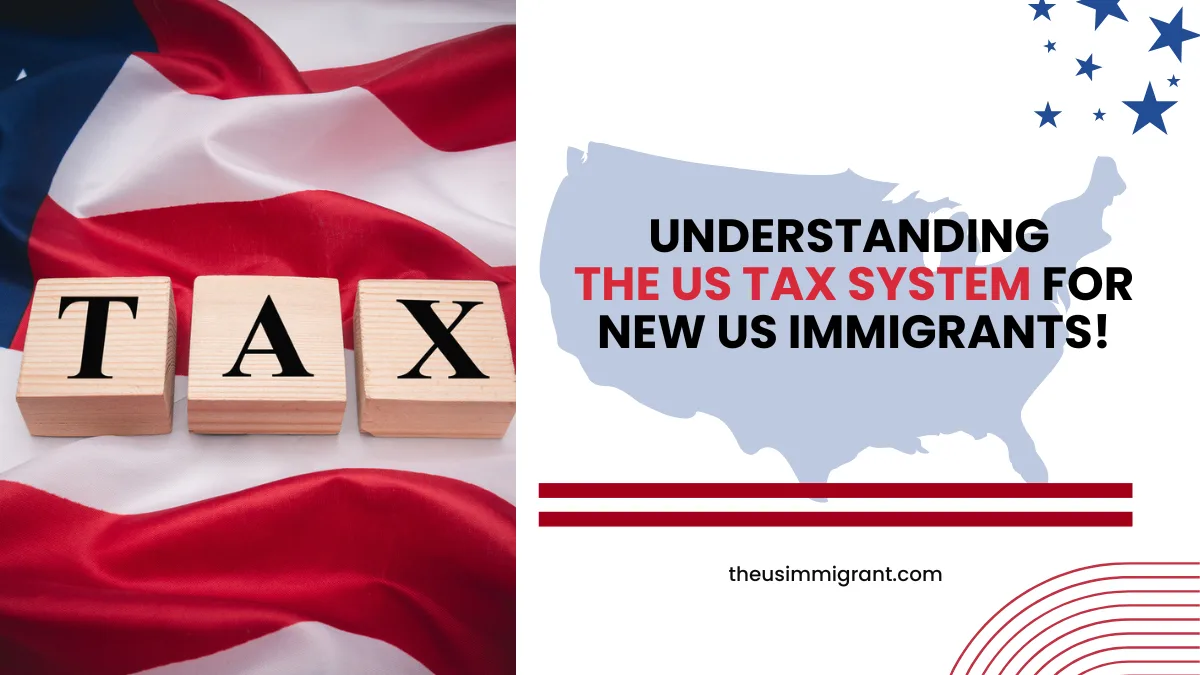Introduction
Anyone wanting to pursue an academic career in America must first obtain an F1 student visa. F1 Visa permits students to come to the USA for full-time study in authorized schools, colleges, or universities.
But to get an F1 visa application through the process is difficult. If you do not understand all that needs to be done when pulling an application together and where it must go in what way, it’ll never be complete.
This complete guide takes a detailed look at the F1 visa, letting you get the guide for your academic journey while you are in the United States of America.
What is the F1 student visa?
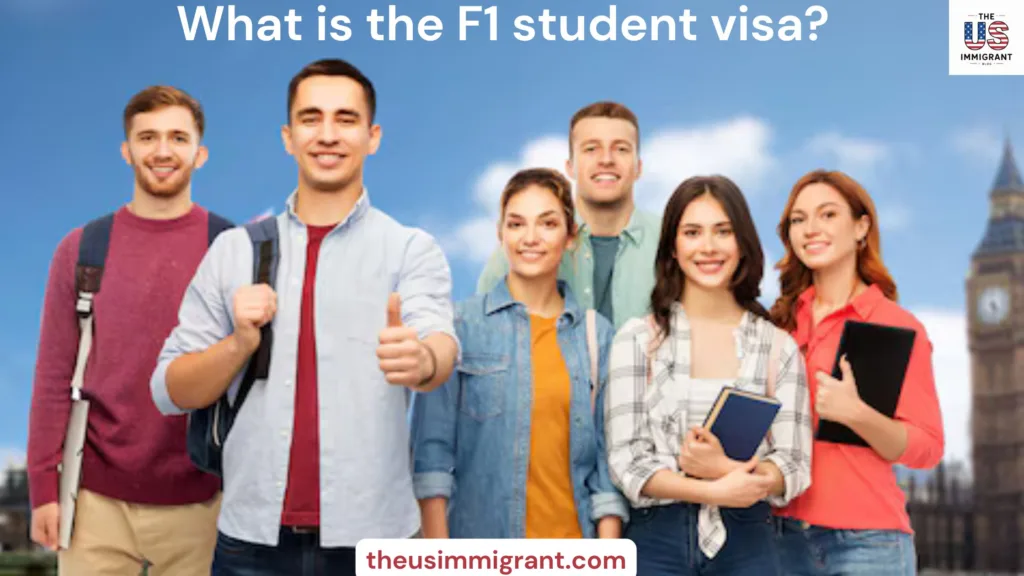
It is a non-immigrant student visa. It allows international students to study in the USA.
Here’s a closer look at its purpose and key features:
1. Definition and Purpose
F1 student visa are required for students; these are issued for students who want to take courses like master’s or PhD programs, and the M1 visa is required for courses in schools or colleges for full-time study. This visa has restrictions of study, as it only allows you to study so you need to comply with the rules when it comes to your studying in the U.S.
2. Eligibility Requirements
To obtain an F1 student visa, you must:
- Be admitted to a SEVP-certified college.
- Prove your capability of speaking English or take some English language courses.
- Show proof of financial ability to cover tuition and living expenses.
- Maintain a residence abroad and demonstrate intent to return after completing your studies.
F1 vs. J1 and M1 Visas
Visa Type | Purpose | Examples |
J-1 Visa | For people in cultural exchange programs to learn and share experiences. | Internships, fellowships |
M-1 Visa | For students learning special skills or taking non-academic programs. | Vocational courses |
F-1 Visa | For students studying full-time in schools or colleges. They can also work a little. | Degree programs, campus jobs |
Eligibility Requirements for the F1 Student Visa
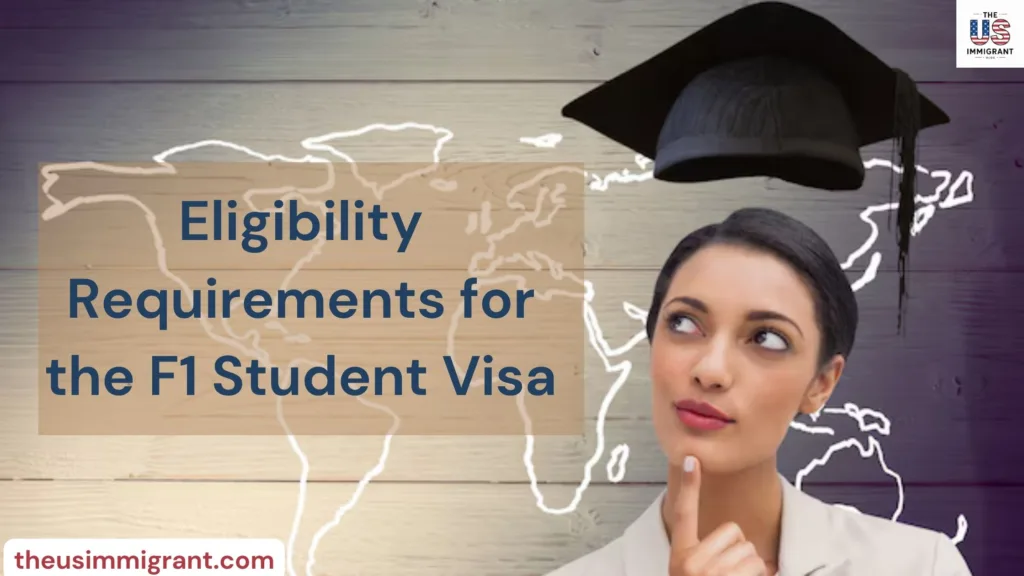
Understanding the eligibility criteria is very important to a successful application. Let’s see the key F-1 student visa USA requirements:
1. Academic Requirements
- Prepare for these dates when you show up to accept a full-time program at an SEVP-certified institution.
- Proof of academic qualifications such as transcripts, diplomas, or standardized test scores.
2. SEVP-Certified Schools
Only SEVP-certified institutions may issue a Form I-20, which is necessary for the F1 visa. Popular examples include major universities, language schools, and specialized schools.
3. English Proficiency
Most colleges require English proficiency—TOEFL, IELTS, PTE, etc.—and other programs offer conditional admission requiring that English language courses be among the required subjects, but this varies from university to university.
4. Financial Requirements
- It is necessary to demonstrate that you are financially good to cover tuition and living expenses.
- Submit financial statements, bank letters, or affidavits as evidence.
Important Documents Needed for the F1 Visa
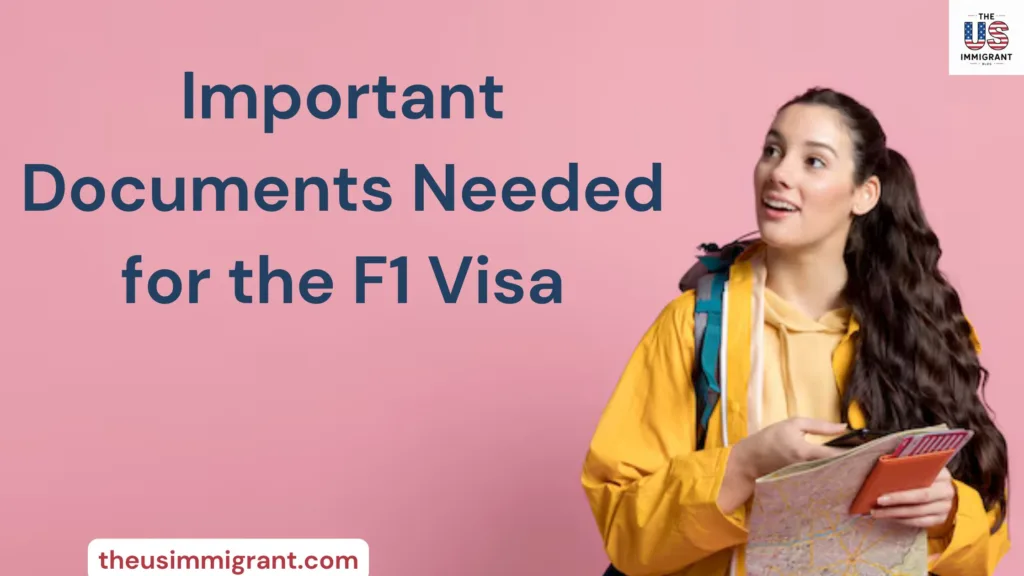
Gathering the right documents is a critical step. Here are the essentials:
1. Form I-20 F1 Student Visa
This form is issued by your chosen institution and includes details about your program, estimated expenses, and SEVIS ID number.
2. DS-160 Form
All visa applicants for types of U.S. visas now require the online non-immigrant form as a standard requirement in 2004 and beyond. The digitized application supplanted paper petitions.
3. Passport Requirements
Visitor visas mandate passport validity exceeding the intended stay by a half-year minimum; otherwise, issuance is nixed. Planning shields against unforeseen hiccups.
4. Financial Statements
Verification involving money movements in statements spanning half a year or letters of economic backing like scholarships. Sufficient support paperwork prevents doubts regarding means.
5. SEVIS Fee Receipt
For your US student visa interview, you will need a payment receipt showing how the $350 SEVIS fee was paid.
The F1 Student Visa Application Roadmap
Navigating the steps to secure a student visa feels confusing but follows a clear progression.
- Acceptance to an approved university, including Form I-20 receipt.
- Filling out the I-901 form and online transaction of the charge, retaining the confirmation.
- Completing and printing the DS-160 details with the attached image.
- Scheduling an interview by paying the application cost.
- Assembling necessary records and practicing likely questions.
- The interview where honesty, assurance, and documentation hopefully yield approval.
Tips for a Successful Visa Interview
1. Common Questions
- Why did you choose this school and program?
- How will you fund your education?
- What are your plans after you graduate?
2. Dos and Don’ts
- Do: Dress professionally, be polite, and provide concise answers.
- Don’t: Give vague responses or appear uncertain about your plans.
3. Overcoming Interview Anxiety
- Practice with a friend or mentor.
- Focus on your long-term goals and confidence in your choices.
Rules of Maintaining F1 Student Visa Status
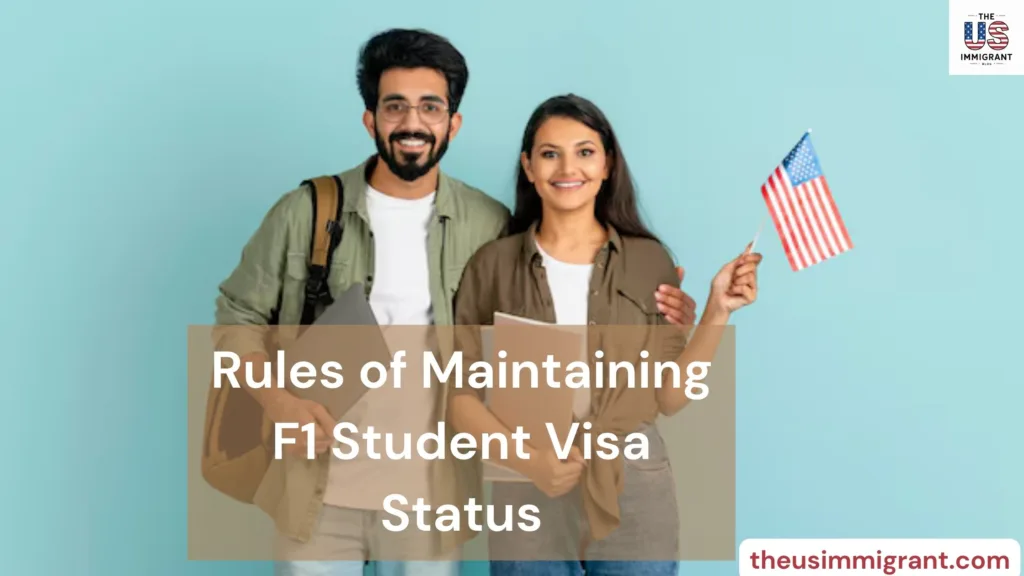
If you don’t follow these instructions or fail to receive an extension when required, your status could be revoked. This might result in you having to return home and make it more difficult for any other graduate work underway.
1. Full-Time Enrolment
F1 students must enroll in a full course load each semester.
2. Employment Rules
- On-campus employment: Maximum 20 hours per week during the semester
- Curricular Practical Training (CPT) and Optional Practical Training (OPT): Permit work on your area of expertise
3. Reporting Changes
Report to SEVIS within 10 days of any changes of address, program, or enrolment status.
Travel Regulations for F1 Student Visa Holders
1. Travel Outside the U.S.
- Make sure your passport and visa are up to date
- Get a travel signature on your Form I-20
2. Re-Entry Procedures
Submit the required documents at the port of entry: Form I-20, a valid visa, and financial proof.
Opportunities After Graduation
1. OPT
F1 students may qualify for the standard 12 months of OPT and an additional 24-month extension when the field of study in STEM.
2. Transitioning to H-1B or Green Card
Many students apply for H-1B visas or pursue employment-based green cards after graduation.
Common Challenges Faced by F1 Visa Holders
1. Cultural Adjustment
Adapting to a new environment can be challenging but enriching.
2. Financial Strain
Budgeting and exploring scholarships or part-time work can alleviate financial pressure.
3. Staying Compliant
Understanding visa rules and deadlines is crucial to avoid issues.
Misconceptions About the F1 Visa
1. Can You Work on an F1 Student Visa?
Limited work opportunities exist, primarily on campus or through CPT and OPT.
2. What Happens After Your Studies?
Options include OPT, the STEM OPT extension or transitioning to other visa types.
3. Myths About Visa Denials
Denials often stem from insufficient documentation or unclear intent. Preparing thoroughly can prevent this.
Unique Tips to Stand Out
- Develop a strong financial plan.
- Utilize resources like academic advisors and career centres.
- Join international student organizations for networking and support.
Addressing Visa Denials
1. Common Reasons
- Insufficient ties to the home country.
- Lack of financial proof.
2. Steps to Reapply
- Address the issues from your previous application.
- Provide additional documentation to strengthen your case.
Benefits of Studying in the U.S. with an F1 Visa
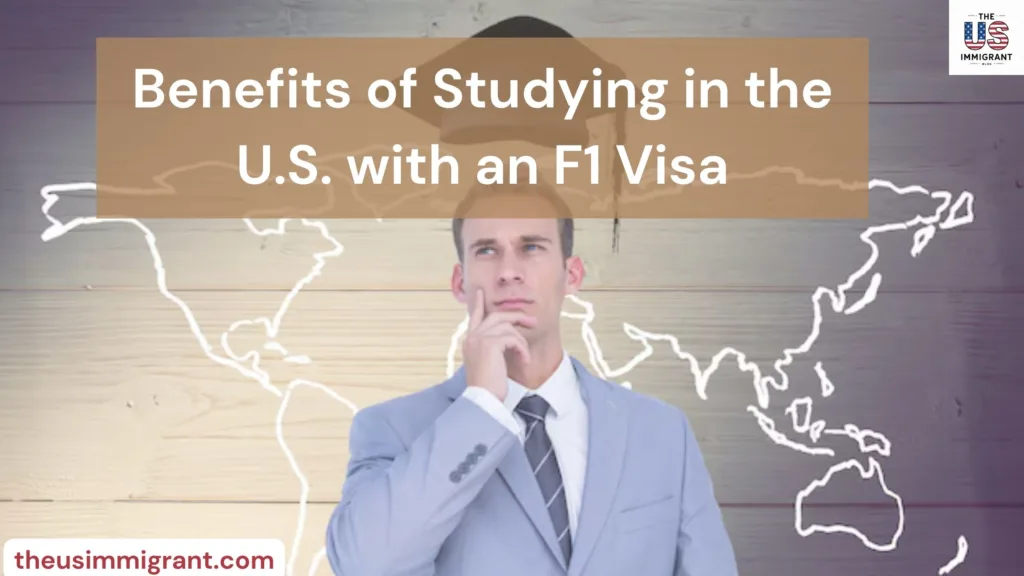
- Access to top-tier education.
- Opportunities for global networking.
- Exposure to diverse cultures and experiences.
Summarizing
Understanding the F1 student visa application process is a crucial determiner of your success in America. By following the advice in this guide, you can turn in your application with confidence and fix your sights on the highest school of all goals: getting a good education. Plan, Get Ready and make it a success
At The US Immigrant, we provide comprehensive blogs with all the essential information for immigrants. Stay connected with us for updates and insights!
Frequently Asked Questions (FAQ's)
- What is the processing time for an F1 visa?
Processing times differ, but generally, these visas get approval between a few weeks and a few months.
- Can I work while I’m on an F1 student visa?
Yes. It also permits on-campus jobs and off-campus practical training options, such as Curricular Practical Training and Optional Practical Training.
- What if my visa expires but I’m still in the United States?
Provided that your I-20 is up to date, and you are registered as a full-time student at your school.
- What is the way to change from an F1 visa to any citizen status?
Some students are going for an F1 student visa to green card, coming right out of school, or applying for a family-based visa for his/her mom, brother, etc.
- Can I take my family to the United States on an F1 student visa?
Yes, family members can apply for F2 visas to accompany you while you are studying.
